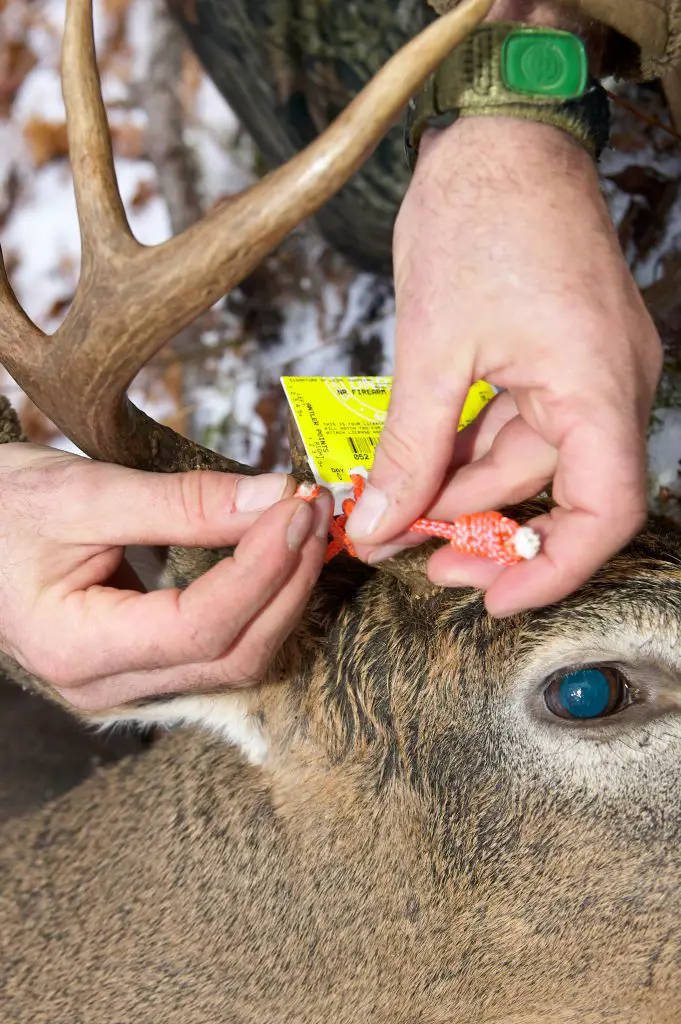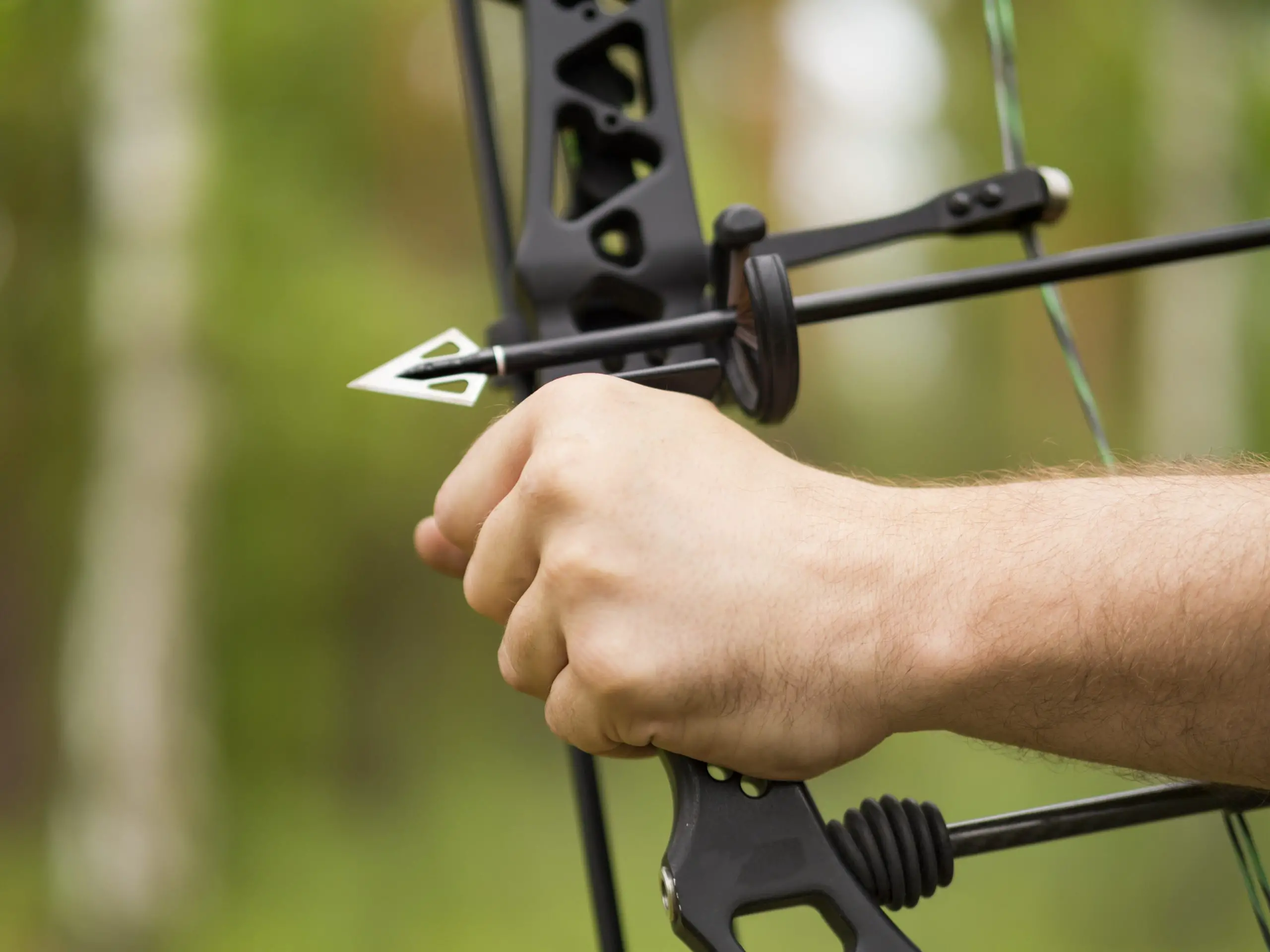Last Updated on May 13, 2023 by
Razor-sharp broadheads can help you kill your game in one shot. Now, what do you need to when you’re bowhunting? To start, invest in some equipment. In this article, we’ll cover all the bases of screwing on broadheads.
For now, we’ll focus on the most important piece of equipment you will buy – broadheads. These broadheads are usually used for big game hunting. To have a successful kill, you have to know what to screw it with. This is especially important because it can cause a safety hazard if not done correctly.
Riveting-in
This is an efficient way of fastening your broadhead to the shaft. To screw it in, you will need a broadhead wrench and a special screw. Once you have these tools, the process is pretty simple. There will be a manual that will come with the tools. Follow the instructions, and you’re all good!
Tying
You only need a nylon rope or a ring to tie your arrowhead to the shaft. However, this method is not preferred because the blade might fall off if not tied properly.
Gluing
This is by far the most popular and efficient way to screw on broadheads. There are two techniques you can use: hot glue or cold glue.
Hot Glue
hunters and archers use hot glue because of its effectiveness and ease. This method works best with fixed broadheads rather than screw-on. Broadheads attached with hot glue can easily be removed using a simple heater. It is the perfect option for anyone planning on changing their broadheads often. While it’s relatively easy to remove a broadhead, you have to use a low heat source to minimize damage. Heat sources such as torches can damage the tip and ruin the broadhead in the long run. To avoid damaging the steel, use a spirit lamp or an alcohol burner. This will ensure your broadhead stays intact, and the glue will melt as well. In case your broadhead has a ceramic coating, this is the best method to preserve the finishing as well. So, should you use hot glue? Let’s find out:
Pros
- Alignment is natural after gluing
- Convenient and cheap
- Tried and tested by bow-hunters for a long time
- Easily removable

Cons
- You need a glue gun and a heating appliance
- Chances of burns if you’re not careful
- Heat might damage steel
Cold Glue
This is another widely used method. You can attach the broadhead to the arrow shaft using an adhesive such as super glue. This method is perfect for competitive archers in tournaments. It is, however, less ideal for usual bowhunting. Unlike hot glue, this isn’t a traditional method. It is an instant solution, but it doesn’t let you change your broadhead afterward. This means you have to align your broadhead correctly on the shaft because there is no going back. Let’s look at some pros and cons of using cold glue:
Pros
- Quick, easy, and instant hardening
- Safer than hot glue
- Less equipment required
- You can fix errors
- Less risk of damage

Cons
- Hard to align using superglue
- Impossible to detach after glue sets
- Broadhead can become brittle
If you’re not looking for an instant solution for competitions or tournaments, its best to use hot glue, it depends on your needs and how much time you have on your hands.
Are Broadheads Risk-Free?
Hunting equipment always carries a risk, but it’s less risky if you’re a seasonal hunter. Broadheads kill instantly because they are designed to cut blood vessels. They cleanly slice through the target’s vitals. This causes hemorrhagic shock. In simpler words: a lot of bleeding. When the bowhunting season arrives, you probably want something sharp for a big game. That’s where broadheads are your perfect fit. Before you’re in the field, make sure you get your equipment appropriately tuned. The Broadhead point is sharp with multiple blades on it. To stay on the safe side, you must take a shot that is clear and close to your target. In bowhunting, broadheads cause injury if they are not appropriately handled.
These blades are razor-sharp. If you’re screwing on your broadhead, use a broadhead wrench to avoid cutting your fingers. These wrenches help prevent cuts when you’re tightening the broadhead on an arrow. If you’re sharpening the blade, do it in a direction away from your body. When you’re done, try cutting through stretched rubber bands. If you can cut cleanly, you’re ready to hunt.
Another thing to remember is that if you’re not using it, be sure to stow it away in the quiver. It’s also essential to set sights specific to broadheads because they are pretty different from field points. These are just a few ways you can avoid injury while hunting with broadheads.
What Is The Key To Making a Clean kill?
By the time the hunting season kicks around, you are ready to get your bow out. It’s right in front of you. You can probably see yourself locking sight pins at your target. At that moment, you don’t want to make any mistakes. There’s not a lot that it takes to make a clean kill, but here are a few things to keep in mind. To make a clean kill with broadheads, you have to aim your shots towards the vitals. A hit towards the lungs or the heart will bring down the animal quickly. However, it is advised not to aim towards the liver or the guts. A hit towards the liver would mean more suffering for the animal. The liver acts as a blood filter necessarily, so you will have to wait for it to bleed out.

You will also have to wait around 7-8 hours for the animal to die. Broadheads towards the guts will kill the animal is about 48 hours. If you did get an arrow in the liver or the guts, go for a second arrow to ensure a clean kill. Broadheads with a larger cutting diameter are helpful for a cleaner shot. Now, when you’re talking about broadheads, you’ve probably heard the term “field point accuracy” thrown around. Broadheads are known to shoot like a field point. While they are pretty accurate, having some practice doesn’t hurt. Make sure your bow is tuned right for your arrow to rip through the wind. The multiple blades on your broadhead also play the role of fletching, which means they will catch the wind. This is where you’ll be grateful for your practice. The more you can judge distance and estimate where your broadhead will hit, the better.
What Shot Angle Should Be Avoided?
Let’s say you’ve got your bow tuned to perfection. You’ve practiced, and you’ve got the right equipment. Finally, you’re in the field. What’s to say you won’t make the wrong shot? After all, broadheads are pretty expensive equipment, and you don’t want to set yourself up for disappointment. Here’s where shot angles come into play. Shooting with a bow means you havelimited angles. You can be a seasoned hunter, and you will still be advised to avoid frontal or steep-angled shots. Frontal shots should also be avoided. At this angle, you can hit a long, but it won’t necessarily be fatal. You would be more likely to hit bones around the shoulders. These shoulder bones will not allow ideal penetration. The animal is also more likely to see you and bolt.
To avoid this, it is better to wait until the front leg of the big game you’re aiming for, is forward. It’s better to go for a broadside angle to ensure a double lung hit anyway. Again, with big game, don’t shoot when the angle is too narrow. You will not be able to get a clean shot. Head-on and rear angles should also be avoided. The excessive muscle in the front blocks your shot from getting to the vital organs. Steep-angled shots, more commonly known as rear-quartering shot angles, are known to deflect. This is especially true if you’re using a mechanical broadhead. Mechanical broadheads are designed to retract as you shoot, and open as they hit the game. In many cases, one blade opens before the others and deflects the tip of the head. Before you know it, you’ve missed your shot. If you’re aiming towards the vitals, one blade might hit the ribs, and the arrow loses momentum. The blade might deflect towards the armpit giving you an unclean shot. This way, you won’t be able to penetrate any vital tissue.

